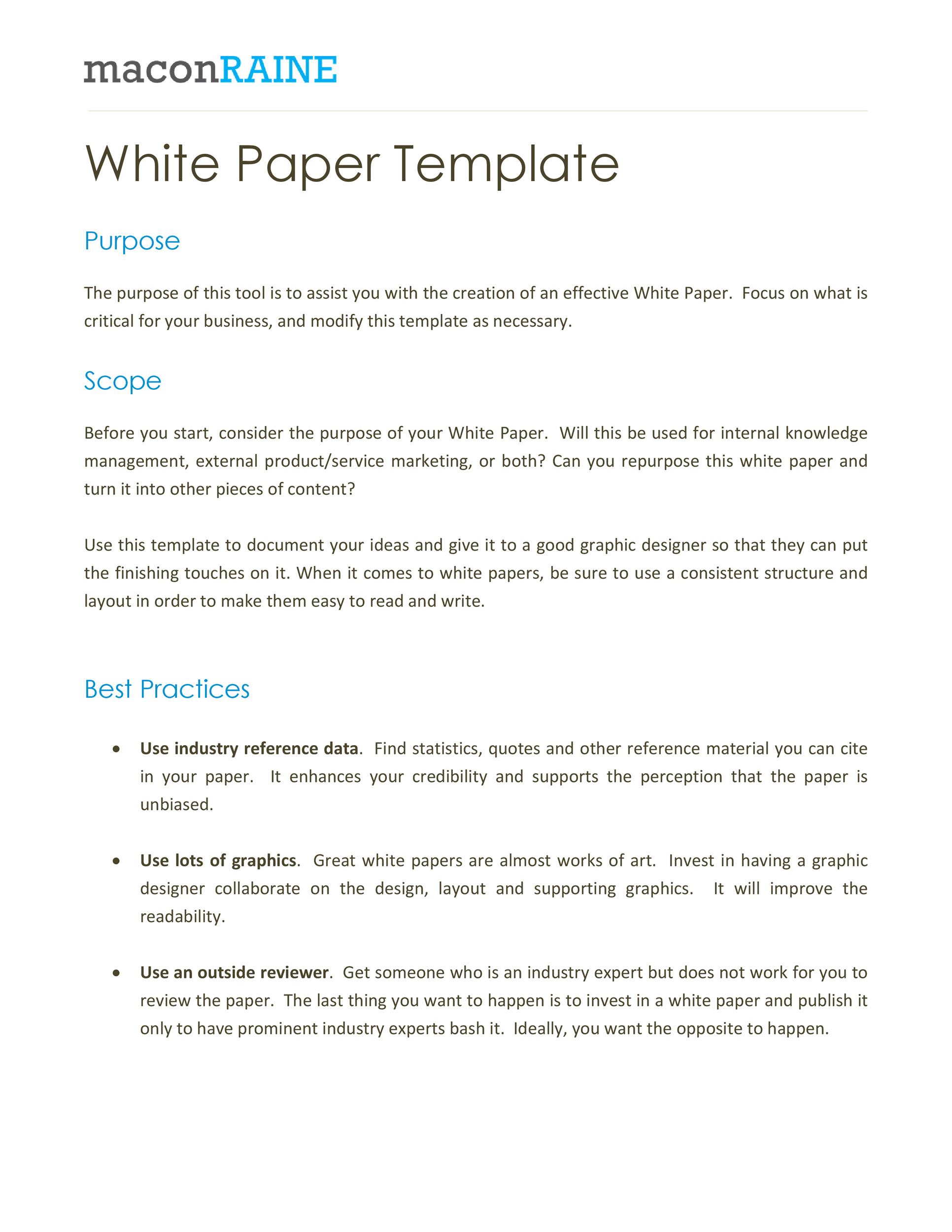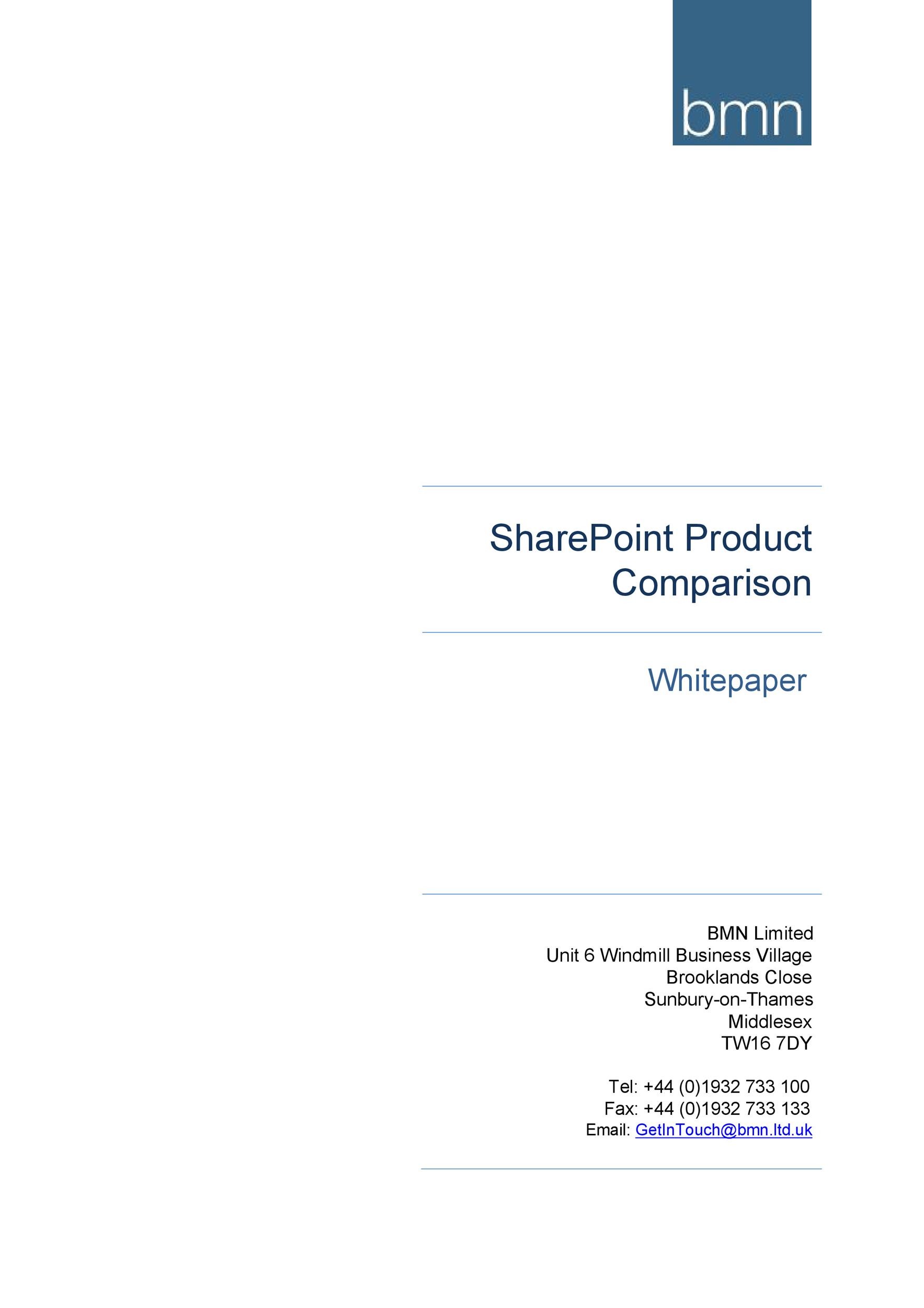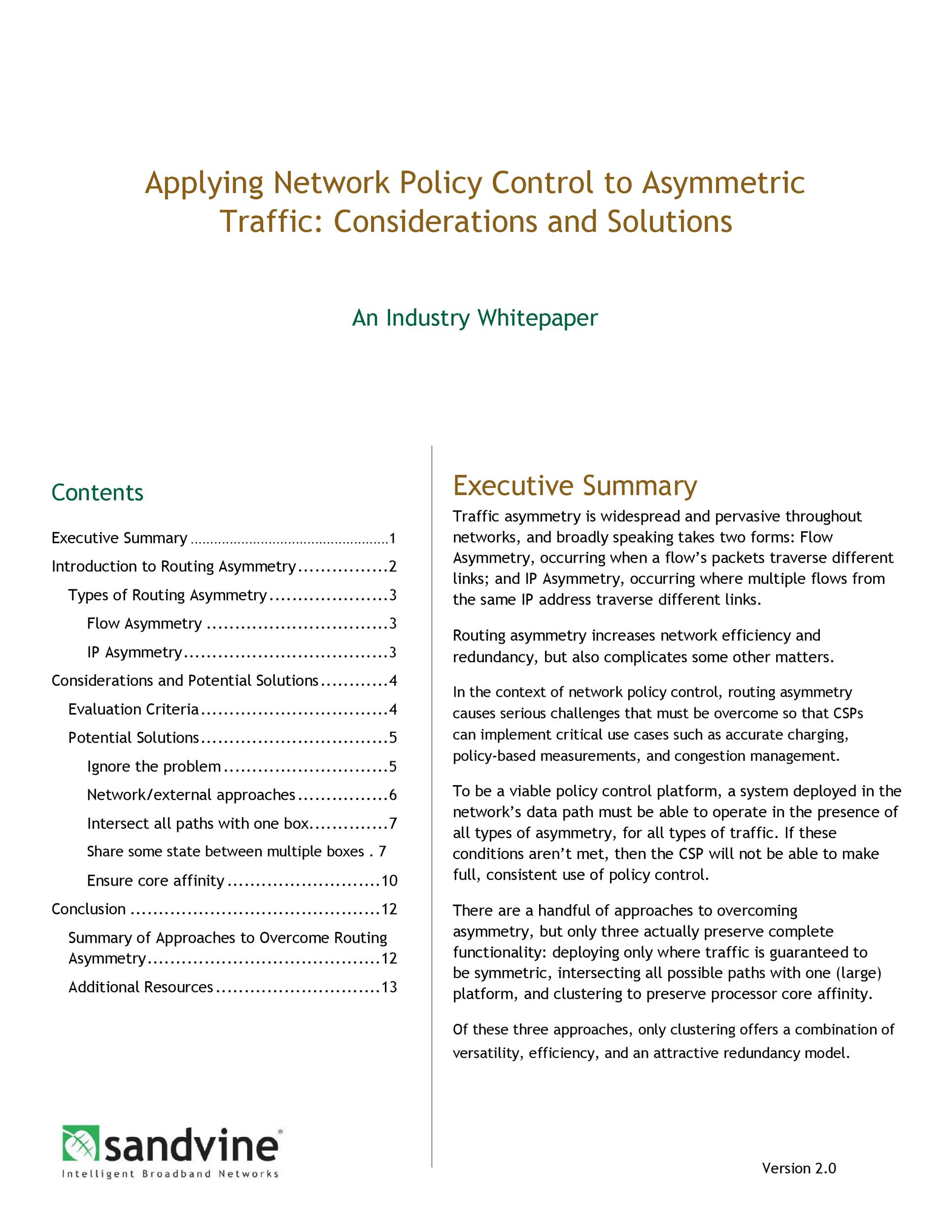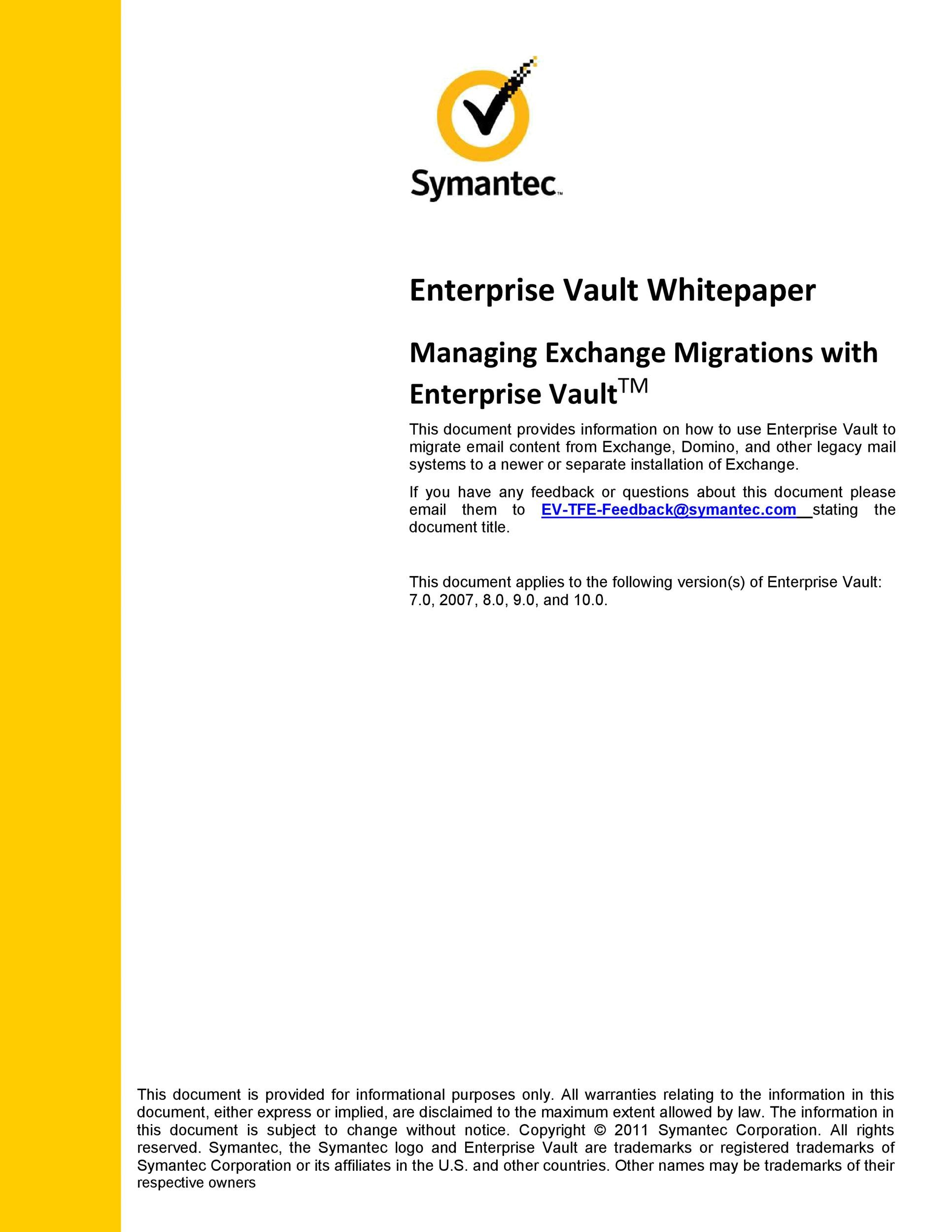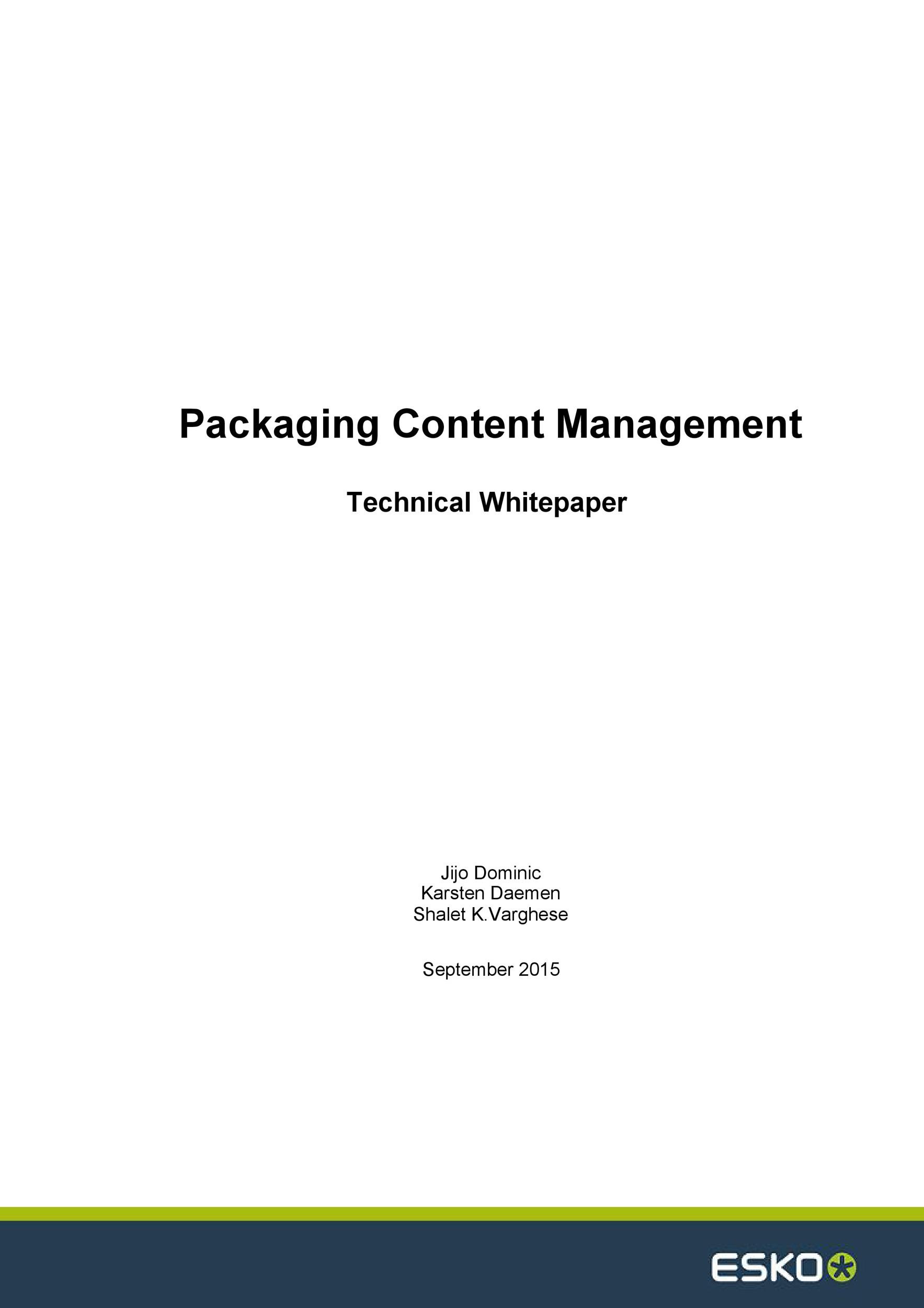If you want to gather and share the deep knowledge of your company about the industry it’s involved in, then writing a white paper template is the perfect way to do this. A white paper outline template is one means of disseminating your company’s expert knowledge and a valuable tool as well in marketing strategies.
Table of Contents
White Paper Templates
What is a white paper?
A white paper template is a report or a guide which informs the readers in a concise manner about a complex issue. It’s meant to help the readers understand the issue, how to solve it and formulate a decision. Most white paper examples are data-centered and are usually composed of business documents which are text-heavy.
Creating one requires a huge amount of research and data. Also, it takes some considerable amount of time to read them. In terms of a white paper format, you need to use a tone of formality in the contents.
White Paper Examples
Selecting the topic of your white paper
White paper templates in the business world serve as a record of the company’s expertise in their field. These documents are for an audience outside of your business. This makes them a valuable tool in attracting readers to your company by providing them with the best-quality knowledge of the industry.
But keep in mind that a white paper design template isn’t a simple sales pitch. It intends to sell your company by emphasizing its valuable recommendations and internal expertise without bidding for business. To draw the attention of readers, consider these factors when choosing a topic:
- Audience
The audience is always the first factor to consider in any business communication. You should already have a target audience before writing your white paper outline template. Audiences may include either long-time consumers who are already familiar with your business or new potential clients who aren’t familiar with your company and industry.
You need to determine the reader’s major questions or their “pain points.” Research on the topics and look for those that haven’t been completely investigated or those with available information that is already outdated. - Expertise
Make sure that the white paper template matches and highlights your company’s expertise. See to it that the document provides for the reader a complete study which includes internal knowledge and external research. Your business’ own experts should know the white paper’s content and how to compile it. - Based on problems and focused on solutions
Typically, a white paper must identify then deal with a specific problem. It’s important that such problem is both timely and relevant. The document could deal with issues like new trends, common dilemmas, industry comparison, changing techniques, and so on.
White Paper Formats
Preparing to write your white paper template
There’s a need for some initial planning before you can start writing a white paper template. It will take a bit of time to do this but it’s necessary to ensure that you come up with a white paper format that’s effective and purposeful. Here are some steps for your preparation:
- Figure out who you plan to write for
This refers to those who will read your paper. Usually, your agency or organization already has a target audience or customers in mind. If you don’t, you should create a complete guide which may help them. - Identify the problems which need solutions
After identifying your target audience, you can now think of the kind of information which they require from you. As a secondary aim, you may relate this customer requirement back into your own services or products. - Come up with ideas
Knowing the problems that need solutions is the theme of the white paper. After this, your next challenge is to determine which problems you want to discuss in your document. You need to research this. You can also begin by asking some meaningful questions:
Which are the most important issues?
Start with the ones which require immediate solutions.
Which problems relate to my business?
For instance, your business wants to get recognized as an authority on any area that you’re new to. You need to find concepts that align with your goals or with your audience.
What’s your line of expertise?
White paper examples can help strengthen the perception that you have deep expertise or knowledge in a specific area you’re known for. - Use the proper white paper format
Sometimes, you would reach a point where you discover that a different format works better in reaching out to your target audience and in achieving your goals. If so, don’t hesitate to change course.
White Paper Outline
The outline of your white paper
On average, many white papers are fairly long but the same procedure for outlining you would use for shorter pieces works well either way. There will, of course, be some adjustments in the outline’s length. An effective outline for a white paper should include the following:
- Working Title or Headline
There’s no rush thinking of a headline, this could come later. But it’s always a good idea, to begin with a “working version” which describes your paper’s topic. - Executive Summary
Be very concise with your summary, a 200-word explanation of what the paper is all about should suffice. Think of this as a short introduction about the subject you plan to write about. - Introduction
Introduce here the points you plan to expand on in the rest of the document. - Sub-Headings
Just like the heading, these don’t need to be the final versions yet. But make sure you know what each section will contain. As the heading defines the main problem which needs solving, consider every sub-heading as a sub-point or another step in solving the problem. - Sidebars
Many white papers take advantage of breakout boxes or sidebars to provide additional data tables or information. You have seen the use of these sidebars in many magazines. List any potential ideas for the sidebar you may have in each section. - Conclusion
You should end your white paper with a concise summary of the key takeaways. You can even include call-to-action statements if you deem them appropriate.
Researching the content of your white paper
Outstanding white paper templates usually are research-driven and fact-based. Remember that your opinions become more credible if you support them with facts. How many facts or research is necessary for your white paper depends upon the topic you plan to cover.
You may even get through by just using Google or your company’s own insights. However, if you would like to get things on a higher level, then you have to do more research. Here are some pointers for you:
- Dig into various research reports
Use research reports from the industry your company is a part of. They can give you a data-backed basis for the contents of your paper. Try seeking out research groups like which come up with original research. From these, you can cite relevant statistics and findings when appropriate. - Visit government websites
There are many government websites which can provide you with relevant data. Again, this depends upon what kind of business you’re in. - Do your own research
Perhaps this is the most challenging step when writing a white paper. But it will yield you the best results. Remember that your competition can also access any information that’s publically-available. This makes original research that you do yourself uniquely powerful and as it’s exclusively yours. Here are some benefits of original research.
It proves that you are a reliable and authoritative source along with your organization. If your self-researched white paper becomes a highly-linked information source for other people and organizations, word could spread around about your organization’s capabilities.
Since you came out with the white paper through your own research, this makes your work unique and makes it far more significant than one done in an afternoon’s work using Google.
Doing your own research gives you that opportunity to know more about your industry and your audience. As an example, let’s say one company surveyed their blog audience. From this, they were able to use their findings to create a blog post (long-form content) of 5,000+ words.
That length alone would have been good enough to turn it into a white paper. Although the post was never published, the company learned a lot about their audience through research, including things they would have never known otherwise. - Read other white paper examples
There may be other white papers that may have covered the same topic you’re dealing with. Find and read them so you can determine the knowledge gaps and the opportunities to build on existing contents. This also makes certain that your white paper would be more original rather than something copied. - Use a mind map
We have mentioned earlier that you can create lengthy white papers. In such a case, you may feel overwhelmed when keeping track of all the sources, contents, and ideas involved in the preparation of one. A mind map can be a helpful organization tool in such cases. This would allow you to catalog and connect all the various pieces of your white paper into one visual overview.









